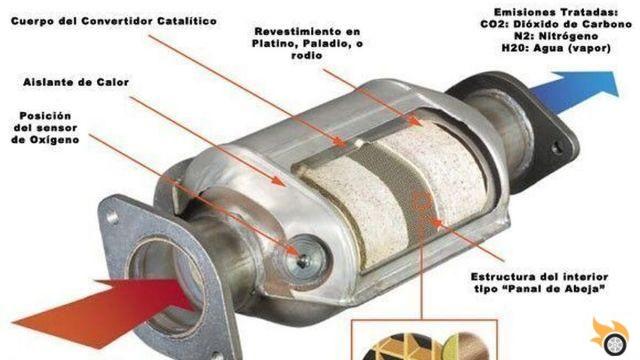
Introduction
The catalytic converter is an essential part of a car's exhaust system. Its main function is to reduce the polluting emissions that are generated during the combustion of the engine. However, like any mechanical component, the catalytic converter can present failures and breakdowns that affect its performance. In this article, we'll answer the most frequently asked questions about a car's catalytic converter and provide information on how to identify and fix related problems.
What is the catalyst and how does it work?
The catalytic converter is a device found in the exhaust system of a car. It is composed of a ceramic substrate coated with precious metals such as platinum, palladium and rhodium. Its main function is to convert the toxic gases produced during the combustion of the engine into gases that are less harmful to the environment.
The conversion process takes place in two stages: oxidation and reduction. In the oxidation stage, exhaust gases pass through the catalyst and react with oxygen to convert unburned hydrocarbons and carbon monoxide to carbon dioxide and water. In the reduction stage, nitrogen oxides are converted to nitrogen and oxygen.
How to know if the catalytic converter has a fault?
There are several symptoms that may indicate a fault in a car's catalyst. Some of the most common are:
- Rotten Egg Smell: If you smell an unpleasant odor similar to rotten eggs, it may be an indication that the catalyst is failing.
- Loss of power: If you notice that your car has lost power and is having a hard time accelerating, it is possible that the catalytic converter is clogged or damaged.
- Increased fuel consumption: A faulty catalytic converter can affect engine performance and cause the car to consume more fuel than usual.
- Luminous witnesses on the board: if the Check Engine or Malfunction of the engine light comes on, it is advisable to check the catalyst.
If you experience any of these symptoms, it's important to take your car to a specialized garage for a proper diagnosis to determine if the catalytic converter is the cause of the problem.
Frequent catalytic converter failures
The catalytic converter can present various breakdowns throughout its useful life. Some of the most frequent are:
- Obstruction: due to the accumulation of residues and dirt inside the catalyst, it can become clogged and make it difficult for exhaust gases to pass through.
- Wear of Precious Metals: Over time, the precious metals that coat the ceramic substrate can wear, reducing the efficiency of the catalyst.
- Physical damage: blows or impacts on the exhaust system can cause damage to the catalyst, such as cracks or breaks.
These breakdowns can be caused by various factors, such as poor maintenance, the use of poor quality fuel or the presence of polluting substances in the exhaust system.
How to repair a damaged catalytic converter?
The repair of a damaged catalytic converter will depend on the type and severity of the failure. In some cases, it is possible to perform a catalyst cleaning to remove accumulated debris. However, in most cases, the most effective solution is to replace the catalytic converter with a new one.
It is important to note that catalyst repair or replacement should be performed by trained professionals, as technical knowledge and specialized tools are required. In addition, it is essential to use quality spare parts to ensure proper functioning of the exhaust system.
Frequent questions
1. How long does a car catalyst last?
The useful life of a car catalytic converter can vary depending on various factors, such as the type of driving, proper maintenance and the quality of the fuel used. In general, it is estimated that a catalyst can last between 80,000 and 150,000 kilometers. However, it is important to note that these values are approximate and may vary from case to case.
2. Can I drive without a catalytic converter?
It is not recommended to drive without a catalytic converter, as this can have negative consequences for both the environment and engine performance. The catalytic converter is a key component to reduce polluting emissions and guarantee correct engine performance. In addition, in many countries, driving without a catalytic converter is prohibited by law and can be punished with fines.
Conclusion
The catalytic converter is an essential part of a car's exhaust system. Its correct operation is crucial to reduce polluting emissions and guarantee optimal engine performance. If you experience symptoms of a catalytic converter failure, it is important to go to a specialized workshop to carry out a proper diagnosis and take the necessary measures to solve the problem. Remember that proper maintenance and the use of quality parts are key to prolonging the life of the catalyst and avoiding future problems.
We hope this article has been useful and has answered your questions about the car's catalytic converter. If you have any other questions or comments, do not hesitate to write to us. We will be happy to help you!
Until next time!


























